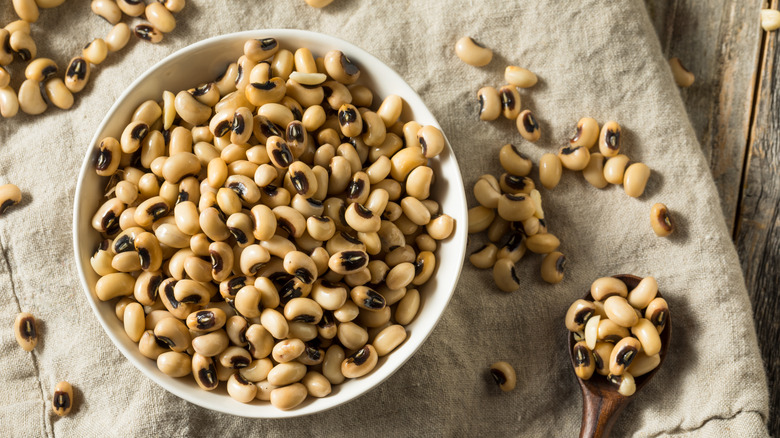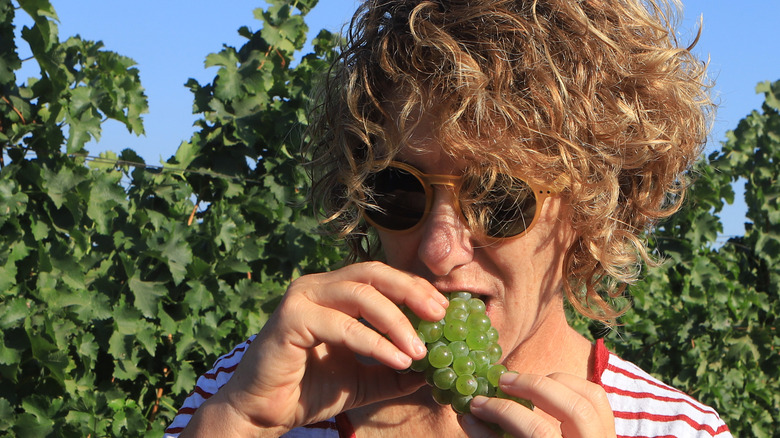Why These Foods Bring People Luck On New Year's Eve
For millennia, humans have been welcoming the arrival of the New Year with a mix of ceremony and superstition. After all, there is no better time to cast off the shortcomings of the previous year and invoke good things — health, prosperity, security — for the coming year. And in various cultures over the centuries, those things have been invoked in a variety of ways, such as making sure you go to bed with full cupboards on New Year's Eve to ward off poverty in the coming year or lighting off fireworks to make noise and scare away evil beings (via Country Living).
Another way humans have been heralding the New Year is with various foods. Depending on which superstition you believe, what you eat and how you eat could either make the coming year a great one or, at the very least, ward off ills that could potentially plague the coming 12 months.
Black-eyed peas are rooted in slavery and want
For centuries before will.i.am, Fergie, and company named their band after the humble legume, black-eyed peas were part of the fabric of American history and culture, although in a way that's tied to misery. Specifically, they accompanied slaves from Africa on the journey across the Atlantic Ocean, as they were used as food for the enslaved people both on the ships and once they got to the New World (via Modern Farmer). For centuries, the food was considered the domain of the poor and the enslaved. However, in an example of making something out of nothing, Blacks in America took the black-eyed-pea and made it their own.
At some point – no one is sure how or when – the eating of black-eyed peas became a New Year's Eve tradition, first among the enslaved, then among free Blacks after the Civil War. One theory is that the tradition emerged from the Southern saying, "Eat poor on New Year's and eat fat the rest of the year." As Country Living points out, other foods considered inedible or the domain of the poor/enslaved that were later embraced by Blacks also entered the black-eyed pea tradition. Notably, some versions of the superstition include eating collard greens and/or cornbread along with the legumes.
Latinos gobble grapes for unclear reasons
Another food-based New Year's Eve superstition is of relatively recent origin and comes from Spain (and has since been adopted across Latin America). As Food Republic points out, it's been a tradition/superstition in Spain to eat 12 grapes — one for each month of the year — at midnight on New Year's Eve. What's more, the eater is expected to consume them within 12 seconds — once for each "bong" of the church bells or grandfather clock once midnight strikes. You can already see potential problems with this: Even without the participants possibly being hamstrung by alcohol consumption, this is an activity that can lead to vomiting or even choking. Just as often, it appears it leads to peals of laughter.
As Atlas Obscura notes, the tradition's origins and exactly how the grapes are supposed to bring good luck are lost to the mists of history.


